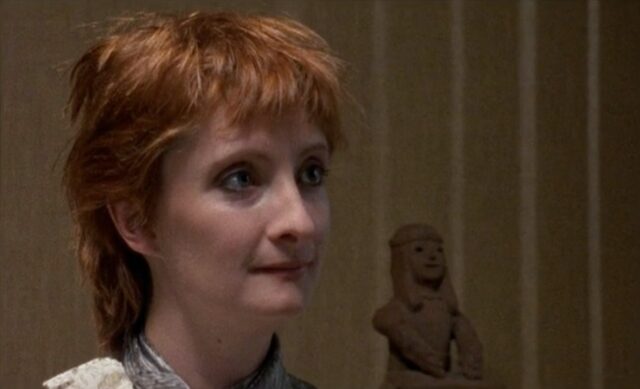I’ve Heard the Mermaids Singing: Dream Lover, by David Bax

Patricia Rozema–whose first feature, 1987’s I’ve Heard the Mermaids Singing, is playing at Los Angeles’ Alamo Drafthouse this week in a new restoration–has had a rich and ongoing career in the years since the film’s release. But her more recent work, like 2015’s Into the Forest and 2018’s Mouthpiece, is absent one of the most important facets of her debut, comedy. That’s not to imply that the newer stuff isn’t good or that Mermaids doesn’t have anything going for it other than laughs. But how many shoestring arthouse movies can say they beat one of the funniest gags from Paul Feig’s Spy to the punch by more than 25 years?
Another crucial element to Mermaids‘ success that did make a return in Mouthpiece is the Toronto setting. Through Rozema’s eyes, the city treads a line between being a charming place through which to ride your bike and being big and uncaring enough that you might just disappear into it.
That may be what has happened to Polly (Sheila McCarthy), a lonely temp with a photography hobby who stumbles onto her ideal job as an assistant at an art gallery–and possibly her ideal woman in its owner, Gabrielle (Paule Baillargeon). She begins to learn new things about herself and to imagine a future Polly she never would have dared before. Mark Korven’s cheeky score sometimes makes Mermaids sound like a detective procedural; she’s investigating her own psyche.
Rozema and McCarthy tenderly but incisively capture the feeling of being a shy person whose inner life is more rewarding and engaging than their outer one. That inner world begins to take on new colors, though, with the introduction of Gabrielle. She seems confident in a way that is fascinating and aspirational to our insecure protagonist.
There has apparently been much debate about whether Mermaids can rightfully be called a lesbian movie. Gabrielle is a lesbian with an on-again/off-again girlfriend (Ann-Marie MacDonald) and Polly’s growing interest in her new boss certainly feels romantic; I’d be inclined to guess that it qualifies.
But there’s also an argument to be made that Polly’s infatuation has more to do with her own blooming self-identity as an artist. In her black and white, montage-heavy daydreams–sometimes literal flights of fancy in which she’s soaring over the city–her imagined companionship with Gabrielle consists largely of them discussing art. The thing about Gabrielle with which Polly is most taken is her own paintings, which Rozema ingeniously depicts as rectangles of warm, glowing light. I’ve Heard the Mermaids Singing spends a lot of its time in Polly’s fantasy life, the kind of place to which it ultimately suggests we all have access through works of art. Enjoying them, creating them, critiquing them; it’s all part of the same magic.




























